When it comes to an organization’s brand, Amazon.com® Founder and CEO Jeff Bezos put it best: “Your brand is what people say about you when you’re not in the room.” Our Employment Branding Survey, conducted in June 2015, posed the question: What are real-world organizations doing with branding, both internally and externally?
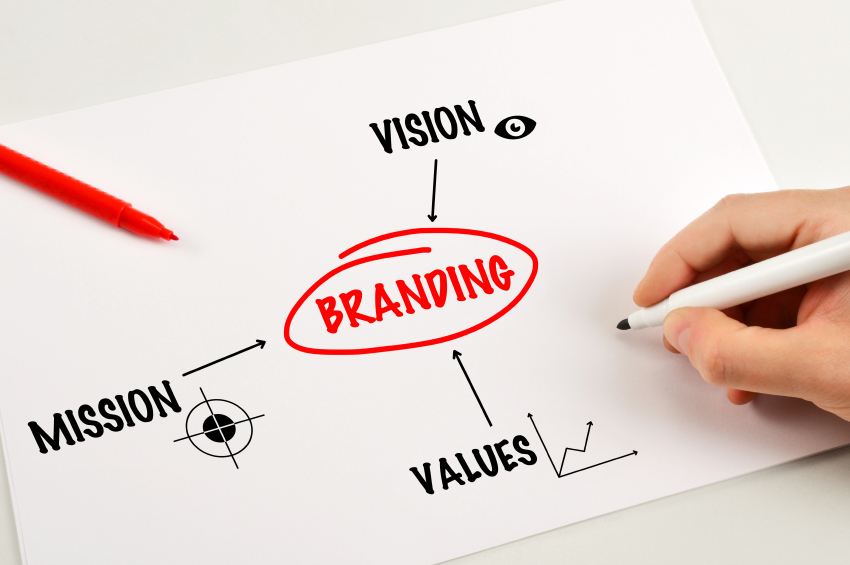 |
Some Highlights from the Employment Branding Survey:
- Only 26.6% of those polled work for a company that has a formal employment brand program.
- 70.8% of respondents with an internal branding initiative declared that boosting employee morale was a goal of the program—12% considered branding very successful at achieving this goal, while 36.4% considered it somewhat successful.
- Top goals of external branding programs were making it easier to fill job openings (68.8% of respondents chose this option) and creating a point of pride and commonality for employees (62.8%).
- 54% of participants regularly monitor outside sources to see what is being said about their organizations.
- 30.6% of respondents said that their organization “walks the talk” (i.e., the actual work done at their company reflects their branding).
Some Highlights from the Employment Branding Survey:
A total of 391 participants responded to the Employment Branding Survey, representing a diverse array of industries, business types, organizational sizes, and locations. Respondents hailed from all across the United States and also around the world, with the largest percentage of participants (19.6%) reporting from companies that have a nationwide presence in the United States. The second-largest region represented was the southern United States, which made up 16.1% of the response pool. 13.8% of participants identified themselves as being employed at non-U.S. or international organizations.
Of those who identified themselves, the majority (65.7%) represent privately owned, for-profit companies; 16.7% are employed by nonprofits; 8.6% work in the public sector; and government organizations were represented by 9.0% of the response pool.
At 43.7%, managers made up the largest portion of the respondent pool. A little over a quarter of participants (26.2%) identified as executives (i.e., VP level or higher), and staff-level employees made up 11.5% of those surveyed. The smallest group represented (at 9.2%) was composed of supervisors.
Want to know more about the state of internal employment branding? Read this free report from SilkRoad, Employment Branding Today: Putting the Company’s Best Face Forward. Download Here.
The Internal Employment Brand Program
Internal employment branding programs do not appear to be on the radar of most participants in our response pool. Just a little over a quarter (26.6%) indicated that their company has such a program.
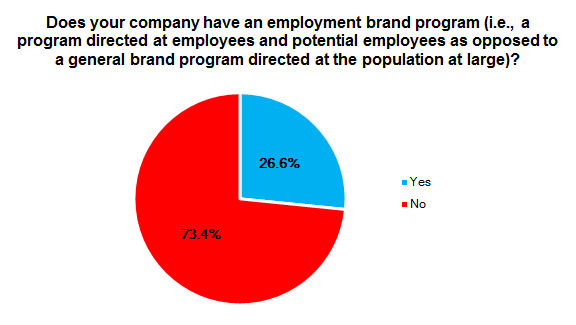
Who’s Responsible for Employment Branding?
Internal employment branding programs do not appear to be on the radar of most participants in our response pool. Just a little over a quarter (26.6%) indicated that their company has such a program.
- Social media strategist
- Community relations
- Marketing department
- Education and communications department
- Recruiting manager
- CEO
- A combination of HR and marketing
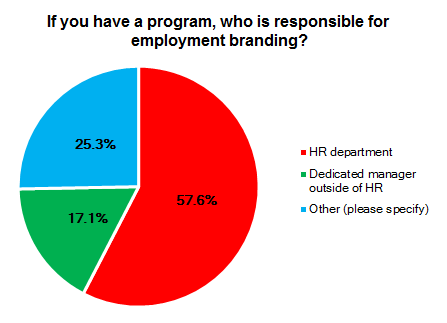
Is Your Organization Considering Branding?
While our very first question suggested that few companies have a formal internal branding program, it appears that such a program may become a priority among respondents in the future. 40.5% indicated they are either planning to implement a branding program or are currently considering it, while about half (50.7%) said they may consider it even though they are not at the moment. A mere 8.9% responded that they will not consider a formal employment brand program.
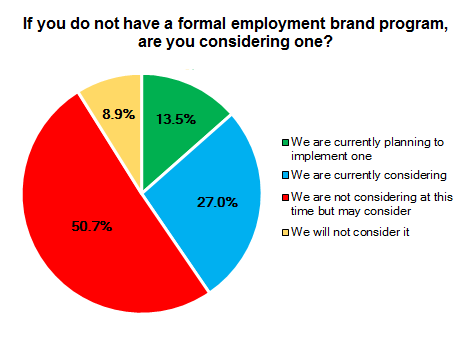
Internal Branding Goals
Among participants, the most common goal of an internal branding program is boosting employee morale (70.8%), followed by boosting engagement (66.1%),
and improving overall employee retention (58.3%). The 10.3% who responded “Other” elaborated that further goals included:
- Attract higher quality of candidates;
- Increase revenues;
- Attract Millennials to come work for our company;
- Pride, identity; and
- Work/life balance.
The Degree of Internal Branding Success
A sizeable portion of respondents indicated that they didn’t know the degree of success or that it was not applicable—this is to be expected given that only a minority of participants have a formal internal branding program.
That said, a considerable number of respondents consider their internal branding programs “somewhat successful” in achieving various goals. Fewer participants find their initiatives on this front “very” successful—but generally speaking, more of our respondents believe branding is successful in its aims than not.
Want to know how you compare to your competitors when it comes to employment branding? Download the free report, Employment Branding Today: Putting the Company’s Best Face Forward. Learn More.
Why Have External Branding?
68.8% of those surveyed said that their external branding program is intended to make it easier to fill job openings, making it the most popular reason for external branding among respondents. 41.1% indicated their brand was meant to have a secondary effect of raising their company’s profile among customers (like in the case of Zappos, whose unique hiring and employment policies have garnered the company massive media attention).
7.8% indicated there were other intentions of their external branding, including:
- To discredit myths about government work and shed light on why it’s an appealing place to work
- Market to consumers
One respondent added: “I really don’t know the objective or if there even is one.”

The Success of External Branding
Of those respondents who have an external branding program, they appear to have strong faith in their efforts. The percentage of participants who feel their external branding is “very” or “somewhat” successful is much higher than the share of respondents who deem it “not very” successful or unsuccessful.
Maintaining the Recruiting Pipeline
59.5% of our survey participants do maintain a pipeline of potential candidates for employment, primarily by maintaining their information in a database or via some other method (which is done by 83%). 30.8% maintain their pipeline through social media relationships, and those who responded “Other” tend to maintain a talent pipeline through:
- Sending out blog updates
- Beginning a resource pool
- Interacting semi-regularly
- Memory
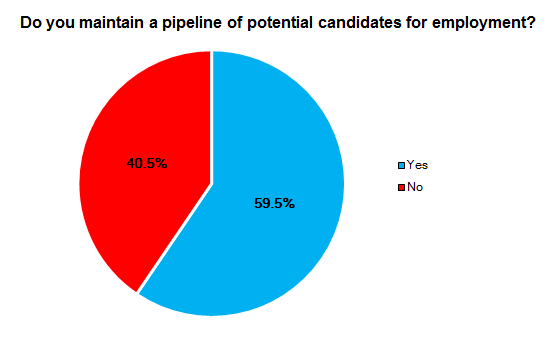
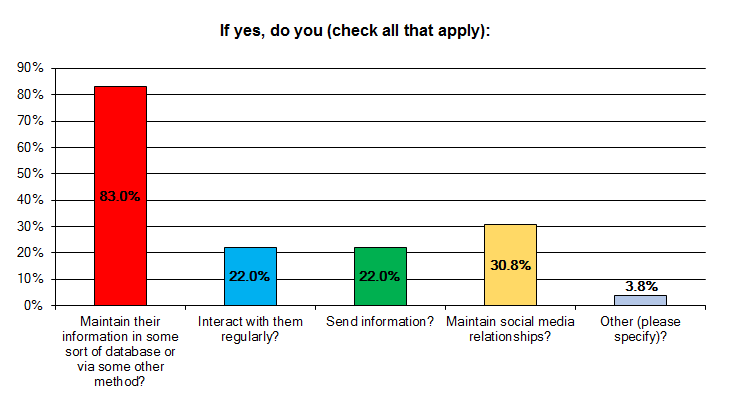
We’ll reveal more results of the employment branding survey in tomorrow’s Advisor, plus an introduction to the free report Employment Branding Today: Putting the Company’s Best Face Forward.
